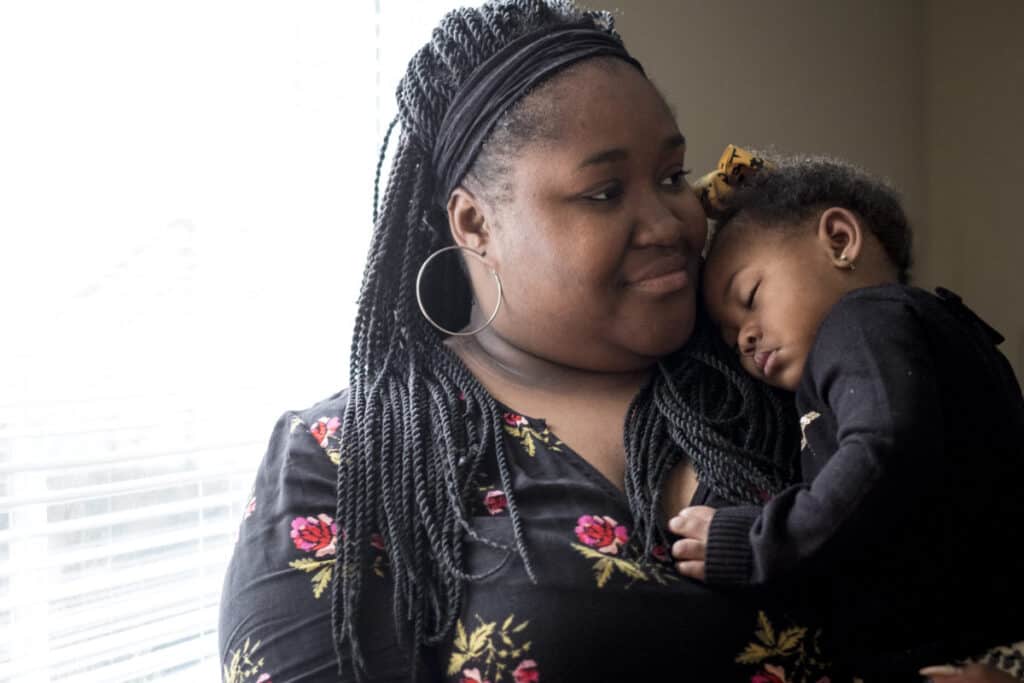If your child qualifies for special education, they should have an Individualized Education Plan, or IEP. Here we will walk you through the Louisiana IEP form, page by page.
(For a broader explanation of what IEP forms need to include in every state, check out The IEP Form: Section-by-section)..
Before your IEP meeting, the team will usually make a draft of the IEP. Make sure to ask for a copy before the meeting so you can review it. If you ask for it, they are required to give you a copy at least 2 days before the meeting. You will be able to make changes at the meeting, or even afterwards.
While you will not need to write the IEP yourself, you should make sure it reflects your child’s real goals and the supports your child will need to achieve them. It helps to know what it includes ahead of time.
Look at the Louisiana IEP form and use it to follow along as we describe each section.
Sections of the Louisiana IEP form
Transition Services
The first page is the Transition Services section, also known as transition planning. (If your child is below 14, you can skip this section for now.)
Whether your child is in a high school class, a community-based classroom, or a more intensive program, they will need to prepare for what they want to do when they either finish high school or turn 22. (Students with intellectual disabilities who are in very specialized classes often stay in the school system until they turn 22.)
This section includes the assessments your child will take to identify career interest and readiness and independent living skills.
It also includes your child’s goals for these areas of life after school:
- Training or education (vocational and academic classes)
- Employment
- Independent living, or living on their own (if they are able to after they finish school)
Then it maps out a coordinated set of action steps to help prepare them for those goals. These action steps are for the school, your child, your family, and any agencies who may provide extra training. The agencies can come to the IEP meeting if they have permission from the parent (or the student if they’re over 18).
Transition planning can start at any time, but it must be included in the IEP when your child turns 16. You and the IEP team will talk about your child’s goals for the future and write them in this section.
General Student Information
This section includes:
- A list of the people on the IEP team
- Your child’s strengths
- Your concerns
- The evaluation results
- Your child’s needs for extra support (including academic, developmental, functional, health-related, communication, behavior, assistive technology, etc.)
- How your child’s disability impacts their progress in the general curriculum
This is where your notes will be helpful! Look in your binder to remember your concerns, hopes, and ideas.
This is a key section for you, the parent! It’s where you can document all your concerns.
It’s very important to describe your child’s needs here completely and in detail. Make sure that this section lists every diagnosis and everything your child struggles with. It could help them get better services!
Instructional Plan / Goals
The Instructional Plan lists your child’s goals.
This will include very specific goals for each area of concern. It will also list the steps to take in order to meet these goals. The team will know how to write the IEP goals in a very specific way so they can measure each step. This lets all of you keep track of your child’s progress.
Although the IEP team writes up the goals, they should reflect your concerns and ideas. You can always say so if you want to change them!
The other parts of the IEP will focus on working towards these goals.
You will see only one page for this section, but that page will be copied for each goal your child has. Most IEPs have several goals.
Accommodations
Accommodations are any kind of change or help that your child will need in the classroom in order to learn. They come in many shapes and sizes.
Here are some examples:
- extra staff, like an aide or a reader
- extra time to take tests or do homework
- communication devices or other equipment to help with sensory or physical needs
You can see a long list of possible accommodations on the IEP form and on this other list.
Program / Services
This section describes:
- Whether your child will use the regular state assessment or the alternate assessment
- Alternative testing pathways to promotion or graduation (April Dunn Act)
- Special transportation services needed
- How much your child will be in regular classes vs. pulled out to work with a specialist
- Extended School Year services (summer)
- Any supports school staff need in working with your child (like how to program a communication device)
Services / Placement
This section describes the services your child will get, and where they will happen.
Kids sometimes get these services outside of the regular classroom, leaving class for a short time to work with a specialist or therapist. But often a special ed teacher or specialist can support your child in the classroom with the other kids. It’s important to balance their need for individual help with their need to be in the classroom getting regular instruction with their peers.
The services may include:
- Therapies like speech, OT (Occupational Therapy), or PT (Physical Therapy)
- Working one-on-one or in a small group with a learning specialist
- Counseling in a group or one-on-one (Groups are helpful if social skills are one of the IEP goals)
Placement / Consent
The final page of the IEP form identifies the school where your child will be placed, and is where you will give your Consent for Services.
If you agree with everything on the IEP, and you feel that nothing important is missing, then you can sign the last page. If you have asked for any changes or corrections, they’ll send you an updated version for you to sign after the meeting. Once you sign the IEP, it becomes a legal document between you and the school.
We suggest that once you get a copy of the IEP with everything filled in, you take it home and review it. There is no pressure for you to sign it right away! You want to make sure this document addresses all of your child’s educational needs.
The Louisiana IEP process can be easier and more effective if you have looked at the form ahead of time and know what to expect. Look through the Louisiana IEP form before your meeting with the school and write down your questions and ideas. Good luck!



